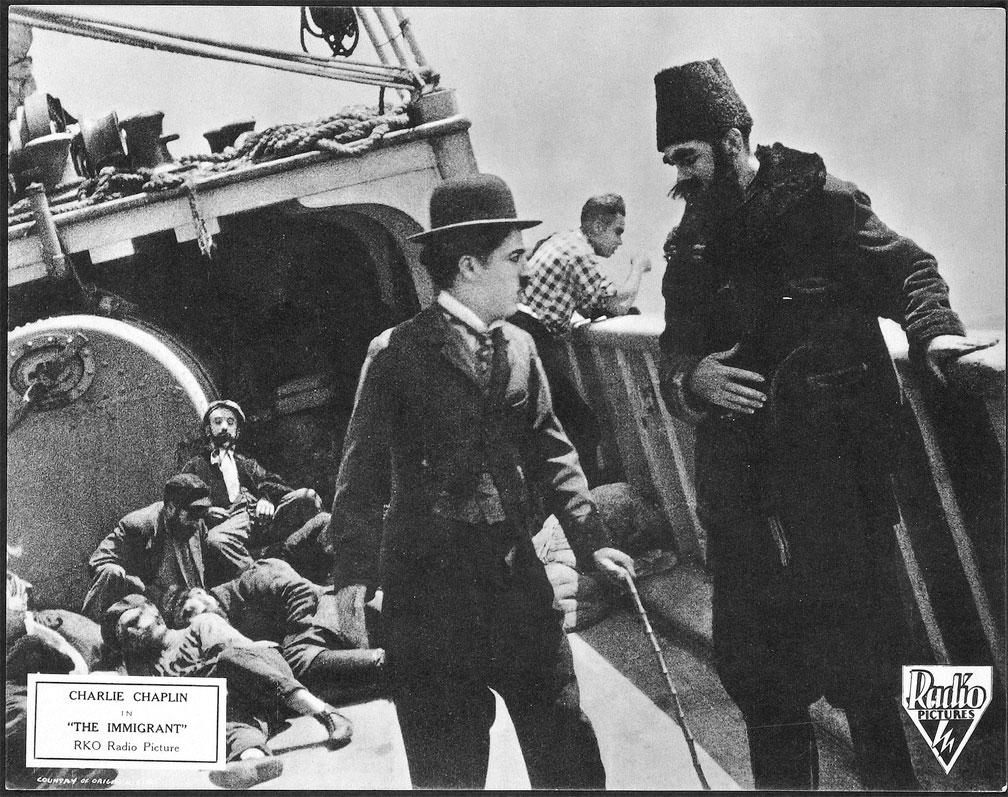Something occurred to me during a screening of Chaplin’s The Immigrant (1917) that I was accompanying for a school group several years ago. I knew the scene at the beginning where the boat is rocking was shot with the camera on a sort of pendulum to create the illusion, so that both the boat and the horizon tilt back and forth. If the boat wasn’t actually rocking, then how was Chaplin sliding back and forth?
I don’t mean the scene below deck with Henry Bergman, dressed as a woman, rolls back and forth across the floor, done on a set built on rockers. It’s the opening scene that precedes it, on the ship’s deck. How the effect was done is shown in Kevin Brownlow’s Unknown Chaplin with an animated drawing showing the camera movement. The doc also mentions that if you look closely you’ll see that the horizon also tips back and forth
Okay, so then if the boat is actually not rocking back and forth, how is it that Charlie is sliding back and forth as if it actually were?

At this particular show I decided to look at Charlie, really focus on his body, and see if I could spot a tell-tale wire pulling him, or anything else. I noticed something he was doing with his legs and feet to create the illusion, one we wouldn’t notice because of of a misdirection. Our eyes just saw the tipping of the boat and Charlie’s body shifting left or right because that’s where the bigger movement and the gag was. Who was going to look at the very bottom of the frame?
I had to confirm my suspicions. I’d already been doing. My undercranking studies, taking clips from Chaplin and Keaton films and slowing them to down to see what they looked like at cranking speed. I did the same with this shot from The Immigrant, and then also steadied the rotation back and forth so the resulting video would be steady (ish) and I’d see what it’d looked like when the shot was taken.
See for yourself…